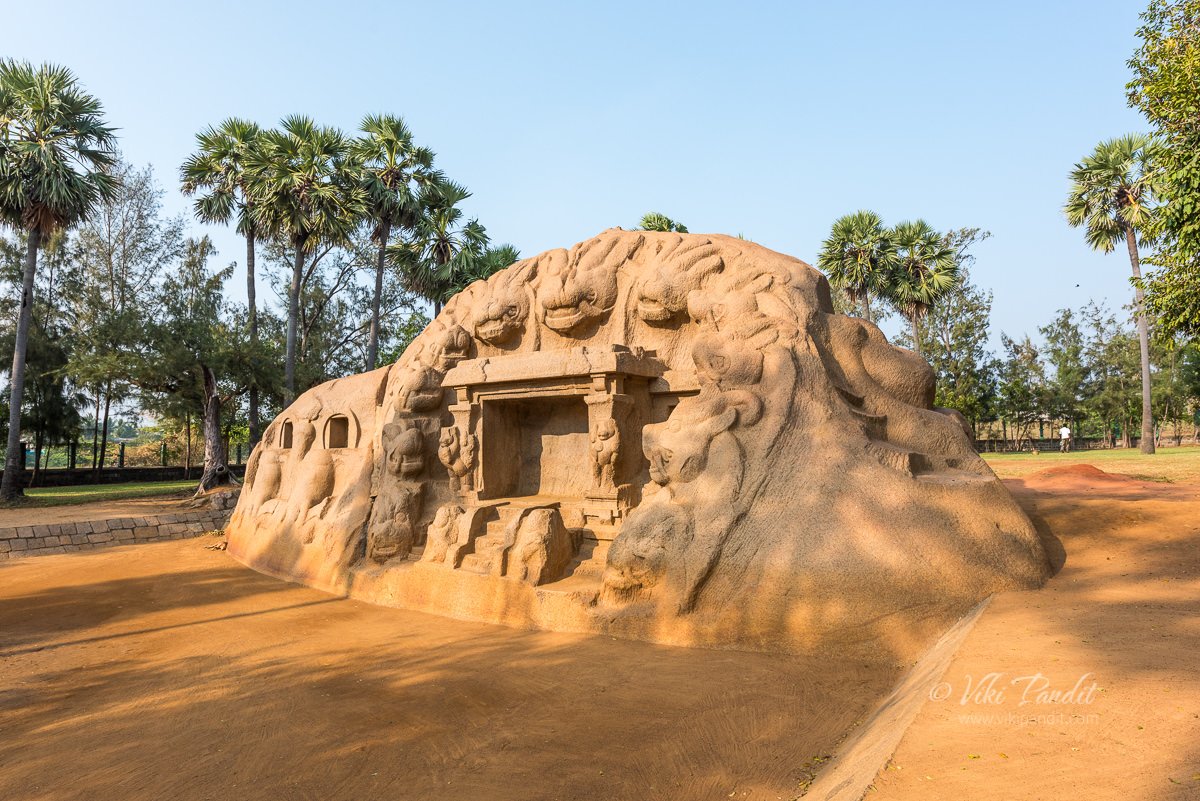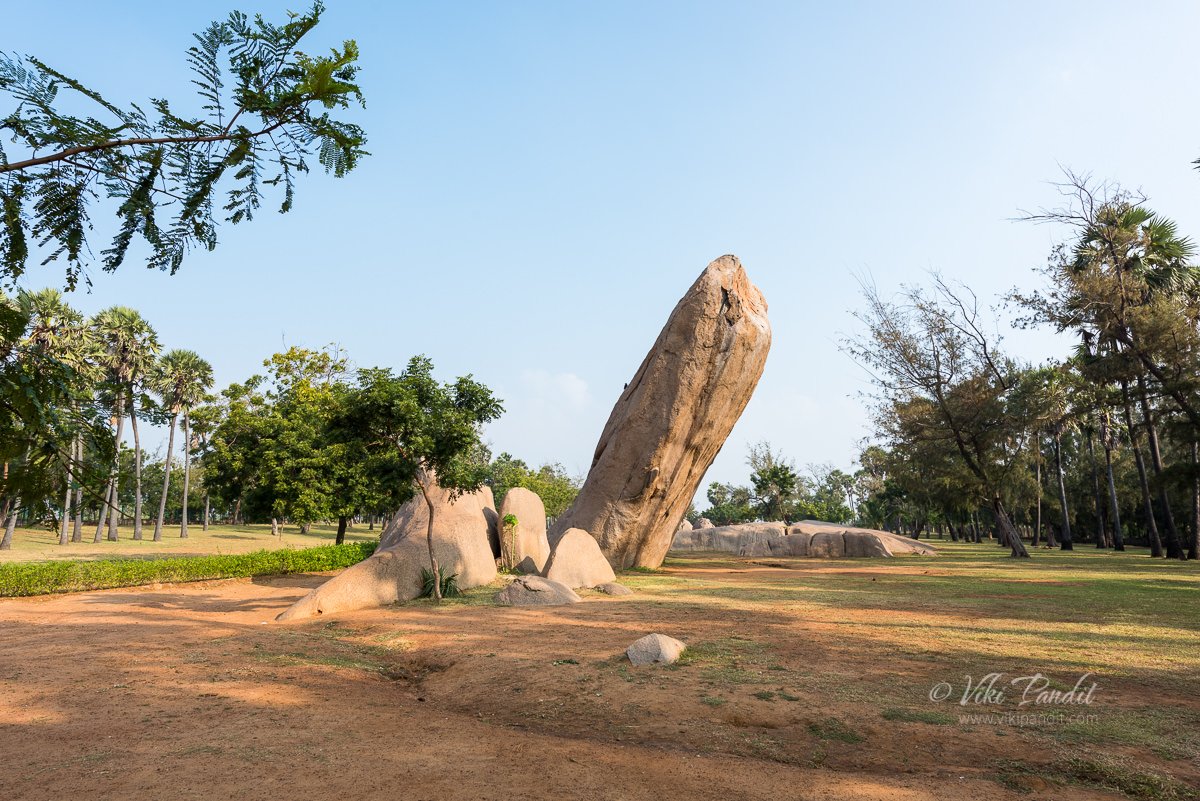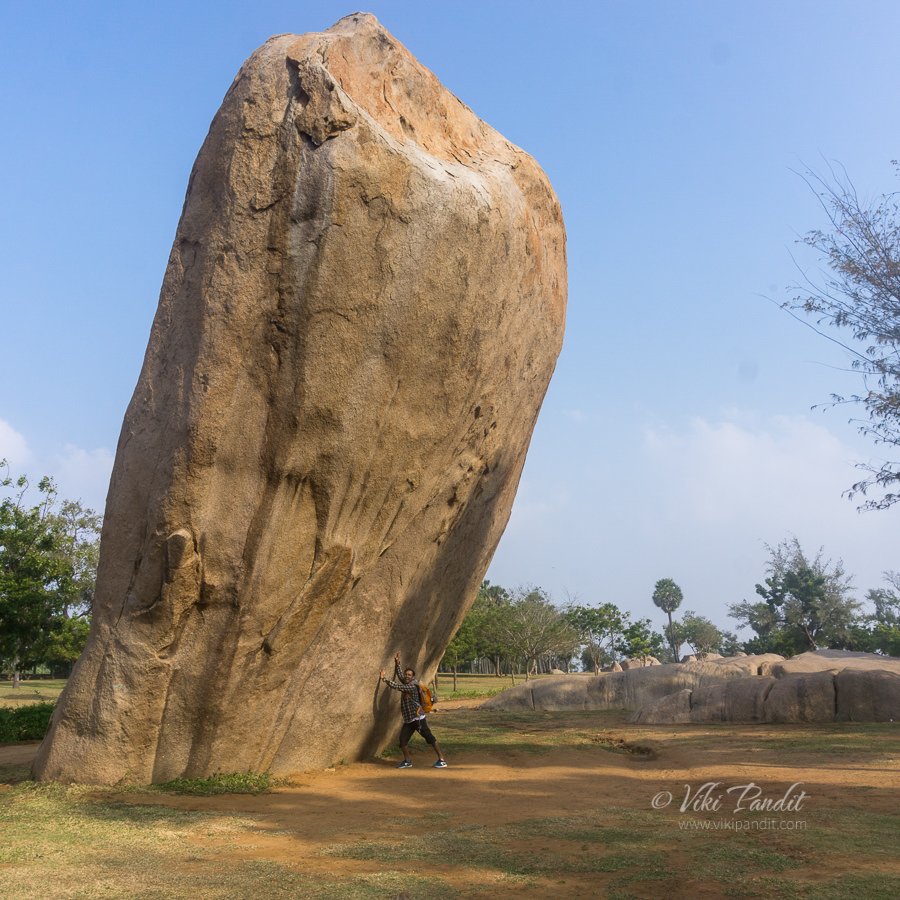Today we drive to Saluvankuppam, to explore the excavated remains of a first-of-its type Yali mandapa or Vyala mandapa. The cave temple is widely known as the Tiger cave.
Well, let me begin by clearing the air first that the Tiger Cave is not really a cave and tigers do not live here either. It is a rock-cut Hindu temple complex with carvings of tiger heads around the structure, located near the coastal village of Saluvankuppam near Mahabalipuram. These rock-cut structures with tiger-head-like shapes are believed to have been constructed in the 7th century CE during the Pallava reign.
Among the many sculpted wonders of Mahabalipuram, the Tiger cave is one of the lesser-visited monuments. Located at about a 5km drive from the Shore Temple also makes it somewhat inaccessible. I guess auto rides should be available to this place but I had my car around so that was a big help.
This park is also maintained by ASI, but it doesn’t require any tickets. There was a lone coconut seller near the gate waiting for tourists to come in.
In my earlier articles, I have tried to pen down the numerous caves, excavated in hill-scarps and used as temples around the Mahabalipuram hillock. The Tiger Cave is a prominent example of this form. Just like its counterparts, it was commissioned in the early 8th century by Pallava King Narasimha Varman II also known as Rajshimha.
The gate led us into a big park surrounded by casuarina trees. The Tiger cave is the first structure just after the gate on the right.
Tiger Cave Mahabalipuram
The cave gets its name because of the crown of the carved heads of Yali (mythical creatures with the head of a tiger). Because the Yali head resembles a tiger, that is how I believe the site got its name from. This rock also has a relief sculpture dedicated to Narasimha Varman II.
The structure is more of a rock-cut pavilion than a temple. It is an oblong boulder cut on three sides facing the sea. The floor level of the mandapa is about 6 ft from ground level. A flight of four rock-cut steps projects in front with parapets on either side. The parapets are in the shape of rough-cut forms of lions. At either side of the adisthana, there are two large pillars, also unfinished, showing rampant lions leaping forwards with riders on their backs. The depth of the mandapa would be about 4ft and its height about 6ft.
The facade looks like a stage more than a temple, conveying perhaps it was used as a place for performances. The cave is below ground level and buried to some extent in the sand. The monolithic rock out of which the tiger cave has been chiseled out is in the shape of a sitting tiger. There is a school of thought that this pavilion could have been dedicated to the goddess Durga. The main deity has most possibly been stolen.
A few steps lead up to the cell at the center. Two pilasters on either side and rampant tiger heads surround the sides of the cell. Two other smaller cells on the left have elephant heads chiseled beneath them. At the top, there are eleven heads carved forming an incomplete elliptical arch all around the mandapa. It is important to point out that these heads are not of tigers but of Yali, mythical creatures. Judging from the general style of the vyalas, this site has been attributed to King Rajasimha.
A few paces from the Tiger cave lies a precariously standing boulder. This rocky outcrop close to Tiger Cave contains some very old inscriptions, one of which led to the excavation of the Subrahmanya Temple close by.
The first thing that comes to mind is how in the hell is it standing like that. It’s like it’s molded at the base in that angle. No other reasoning is possible. While standing below I felt an adrenalin rush. It felt it could at any moment just fall and smash me into tomato sauce.
The tiger cave is unique in the way it was sculpted. The combination of the yali and elephant heds left me even more mystified. I have never seen such a combination in any of my explorations.
From the tiger cave, we drove to one of the oldest surviving lighthouses in South India. Thanks for reading. Please leave me a comment if you liked the post or follow my story as I visit the old lighthouse in Mahabalipuram.
There are no specific times for visits
Entry to the Tiger cave site is free
Disclaimer: The information presented in this article is based on the time I visited the premises. Note that there might be changes in the prices of merchandise and admission fees that might have occurred after this article was published. At times the facility might also be closed for repairs or for variety of other reasons. Kindly contact the facility or facilities mentioned in this article directly before visiting.
Usage of this site indicates acceptance of my Terms and Conditions.
Credits: The historical information presented herein is gathered mostly from local guides that were re-inforced via historical writings.








